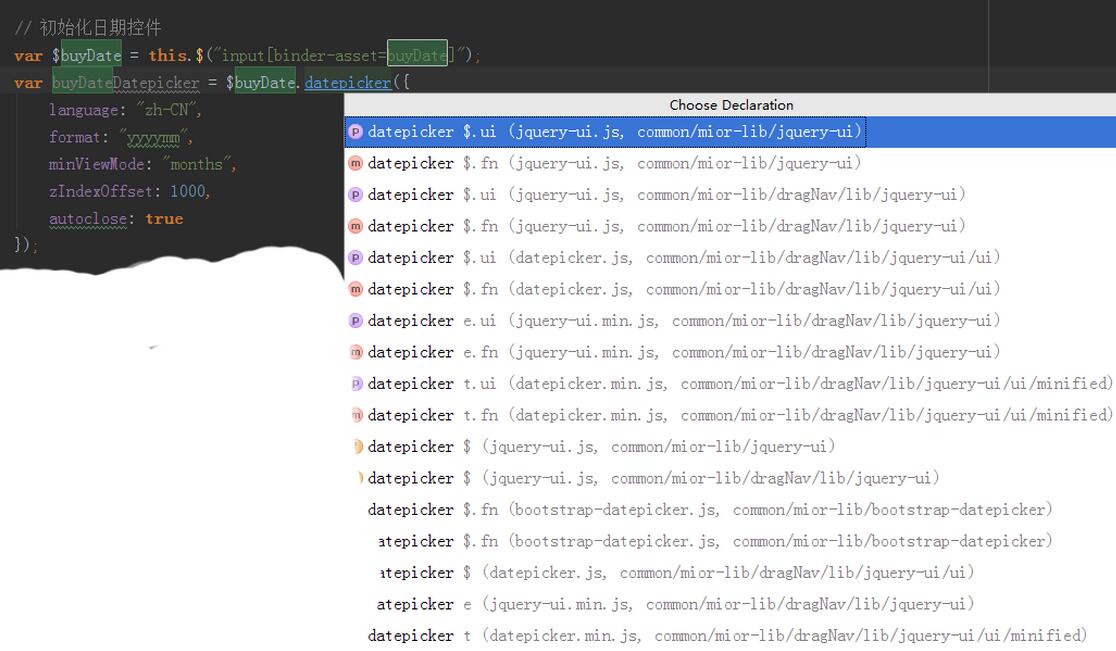大家好,我是指北君
不知道大家在写 Spring Boot 项目的过程中,使用过 Spring Boot Actuator 吗? 知道 Spring Boot Actuator 是什么,干什么的吗?今天就要来给大家介绍一下 Spring Boot Actuator,学习如何在 Spring Boot 2.x 中使用、配置和扩展这个监控工具。Spring Boot 1.x 的使用就不再这边介绍了。相信大家平时使用的框架基本上都要升级到 2.x了吧。
什么是 Actuator ? {#什么是-actuator-}
从本质上讲,Spring Boot Actuator 为我们的应用程序带来了生产就绪的功能。监控我们的应用程序,收集指标,了解流量,或者是数据库的状态。有了它,我们就可以很简单的监控应用程序的各种指标数据。
Spring Boot Actuator 使用 http 或者 JMX 的方式来公开运行中的应用程序的操作信息--健康、指标、信息、转储、环境等,我们能够方便的与它互动。只要添加 Spring Boot Actuator 依赖到 classpath 中,就有几个指标路径可供我们开箱使用。与大多数 Spring boot 模块一样,我们可以很容易地以多种方式配置或扩展它。
快速入门 {#快速入门}
要想启用 Spring Boot Actuator,我们只需在软件包管理器中添加 spring-boot-starter-actuator 依赖项。在 pom.xml 文件添加如下代码即可:
|-----------------|------------------------------------------------------------------------------------------------------------------------------|
| 1 2 3 4 |
是吧,很简单就添加好了。有的小朋友可能会又疑问了,为什么没有添加 version 节点呢?那是因为 Spring Boot 的 parent pom 会制定版本号,所以这里无需再次指定了。
Spring Boot 2.x Actuator {#spring-boot-2x-actuator}
在 2.x 版本中,Spring Boot Actuator 保持了 1.x 的基本操作,但简化了它的模型,扩展了它的能力,并加入了更好的默认值。这个版本变得与技术无关。它还简化了其安全模型,将其与应用程序模型合并。最新版本现在支持CRUD模型,而不是旧的读写模型。
技术支持 {#技术支持}
在 2.x 中,Spring Boot Actuator 将其模型定义为可插拔和可扩展的,而不依赖于 MVC。通过这个新的模型,我们能够利用 MVC 以及 WebFlux 作为底层 Web 技术的优势。此外,可以通过实现正确的适配器来添加即将到来的技术。不过 JMX 仍然被支持,无需任何额外的代码就可以暴露路径。
重要变化 {#重要变化}
与以前的版本不同,Spring Boot Actuator 的大多数路径都是禁用的。默认情况下,只有 /health 和 /info 两个可用。如果我们想启用所有的路径,可以设置 management.endpoints.web.exposure.include=* 来实现。Actuator 现在与常规的 App 安全规则共享安全配置,所以安全模型被大大简化。要调整 Actuator 的安全规则,我们可以只添加一个 /actuator/** 的条目。
|-------------------------|-------------------------------------------------------------------------------------------------------------------------------------------------------------------------------------------------------------------|
| 1 2 3 4 5 6 7 8 | @Bean public SecurityWebFilterChain securityWebFilterChain( ServerHttpSecurity http) { return http.authorizeExchange() .pathMatchers("/actuator/**").permitAll() .anyExchange().authenticated() .and().build(); } |
我们可以在全新的 Actuator 官方文档中找到进一步的细节。另外,在默认情况下,所有的 Actuator 路径现在都被放在 /actuator 路径下。和以前的版本一样,我们可以使用新的属性management.endpoints.web.base-path 来调整这个路径。
预定义的路径 {#预定义的路径}
让我们看看一些可用的路径,其中大部分在1.x中已经可用。另外,有些路径被添加了,有些被删除了,有些被重组了。
- /auditevents 列出了安全审计相关的事件,如用户登录/注销。此外,我们还可以通过本金或类型以及其他字段进行过滤。
- /beans 返回我们BeanFactory中所有可用的bean。与/auditevents不同,它不支持过滤。
- /conditions,以前被称为/autoconfig,围绕自动配置建立一个条件报告。
- /configprops 允许我们获取所有@ConfigurationProperties豆。
- /env 返回当前的环境属性。此外,我们还可以检索单个属性。
- /flyway 提供了关于我们Flyway数据库迁移的细节。
- /health 总结了我们应用程序的健康状态。
- /heapdump 构建并返回我们应用程序使用的 JVM 的堆转储。
- /info 返回一般信息。它可能是自定义数据、构建信息或关于最新提交的细节。
- /liquibase 的行为类似于/flyway,但针对Liquibase。
- /logfile 返回普通的应用程序日志。
- /loggers 使我们能够查询和修改我们应用程序的日志级别。
- /metrics 详细说明我们应用程序的指标。这可能包括通用指标和自定义指标。
- /prometheus 返回与前面一样的指标,但格式化为与Prometheus服务器一起工作。
- /scheduledtasks 提供了关于我们应用程序中每个计划任务的细节。
- /sessions 列出HTTP会话,因为我们使用的是Spring Session。
- /shutdown 执行应用程序的优雅关闭。
- /threaddump 转储底层JVM的线程信息。
执行器路径的超媒体 {#执行器路径的超媒体}
Spring Boot 增加了一个所有路径的集合入口,可以返回所有可用的执行器路径的链接。这将有助于发现执行器路径及其相应的URL。默认情况下,这个集合入口可以通过 /actuator 路径访问。因此,如果我们向这个URL发送一个GET请求,它将返回各种路径的执行器链接。
|------------------------------------------------------------------------|----------------------------------------------------------------------------------------------------------------------------------------------------------------------------------------------------------------------------------------------------------------------------------------------------------------------------------------------------------------------------------------------------------------------------------------------------------------------------|
| 1 2 3 4 5 6 7 8 9 10 11 12 13 14 15 16 17 18 19 20 21 22 23 24 | { "_links": { "self": { "href": "http://localhost:8080/actuator", "templated": false }, "features-arg0": { "href": "http://localhost:8080/actuator/features/{arg0}", "templated": true }, "features": { "href": "http://localhost:8080/actuator/features", "templated": false }, "beans": { "href": "http://localhost:8080/actuator/beans", "templated": false }, "caches-cache": { "href": "http://localhost:8080/actuator/caches/{cache}", "templated": true }, // ... } |
如上所示,/actuator 路径在 _links 字段下报告所有可用的执行器路径。如果我们配置了一个自定义的管理基础路径,那么我们应该能使用该集合入口发现URL。例如,如果我们将management.endpoints.web.base-path 设置为 /mgmt ,那么我们应该向 /mgmt 路径发送请求,以查看链接列表。但是如果当管理集合入口被设置为 / 时,集合入口被禁用,以防止与其他映射发生冲突的可能性。
健康指示器 {#健康指示器}
就像以前的版本一样,我们可以很容易地添加自定义指标。与其他 API 相反,用于创建自定义健康路径的抽象概念保持不变。然而,一个新的接口,即 ReactiveHealthIndicator,已经被添加到实现反应式健康检查。让我们来看看一个简单的自定义反应式健康检查。
|------------------------------------|------------------------------------------------------------------------------------------------------------------------------------------------------------------------------------------------------------------------------------------------------------------------------------------------------------------------------------------------------------------------|
| 1 2 3 4 5 6 7 8 9 10 11 12 | @Component public class DownstreamServiceHealthIndicator implements ReactiveHealthIndicator { @Override public Mono
健康指标的一个方便的特点是,我们可以把它们作为一个层次结构的一部分进行汇总。因此,按照前面的例子,我们可以把所有的下游服务归入一个下游服务类别。只要每个嵌套的服务都是可以到达的,这个类别就会是健康的。
健康组 {#健康组}
从 Spring Boot 2.2 开始,我们可以将健康指标组织成组,并对所有组员应用相同的配置。例如,我们可以通过在 application.properties 中添加以下内容来创建一个名为 custom 的健康组。
|-----------|----------------------------------------------------------------|
| 1 | management.endpoint.health.group.custom.include=diskSpace,ping |
这样,自定义组包含 diskSpace 和 ping 健康指标。现在,如果我们调用 /actuator/health 路径,它将在 JSON 响应中告诉我们关于新的健康组。
|-----------|-------------------------------------|
| 1 | {"status":"UP","groups":["custom"]} |
通过健康组,我们可以看到一些健康指标的汇总结果。在这种情况下,如果我们向 /actuator/health/custom 发送一个请求,
|-----------|------------------|
| 1 | {"status": "UP"} |
我们可以通过 application.properties 来配置该组,以显示更多细节。
|-------------|----------------------------------------------------------------------------------------------------------------------------|
| 1 2 | management.endpoint.health.group.custom.show-components=always management.endpoint.health.group.custom.show-details=always |
现在,如果我们向 /actuator/health/custom 发送同样的请求,我们会看到更多的细节。
|------------------------------------------------|-------------------------------------------------------------------------------------------------------------------------------------------------------------------------------------|
| 1 2 3 4 5 6 7 8 9 10 11 12 13 14 15 16 | { "status": "UP", "components": { "diskSpace": { "status": "UP", "details": { "total": 499963170816, "free": 91300069376, "threshold": 10485760 } }, "ping": { "status": "UP" } } } |
也可以只为授权用户显示这些细节。
|-------------|----------------------------------------------------------------------------------------------------------------------------------------------|
| 1 2 | management.endpoint.health.group.custom.show-components=when_authorized management.endpoint.health.group.custom.show-details=when_authorized |
我们还可以有一个自定义的状态映射。例如,它可以不返回 HTTP 200 OK 响应,而是返回 207 状态代码。
|-----------|--------------------------------------------------------------------|
| 1 | management.endpoint.health.group.custom.status.http-mapping.up=207 |
在这里,我们要告诉 Spring Boot,如果自定义组的状态是 UP,就返回 207 的 HTTP 状态代码。
Spring Boot 2中的度量 {#spring-boot-2中的度量}
在 Spring Boot 2.0 中,内部指标被 Micrometer 支持所取代,因此我们可以预期会有一些变化。如果我们的应用程序正在使用 GaugeService 或 CounterService 等度量衡服务,它们将不再可用。
相反,我们要与 Micrometer 直接互动。在 Spring Boot 2.0 中,我们会得到一个自动配置的 MeterRegistry 类型的 bean。此外,Micrometer 现在是 Actuator 依赖的一部分,所以只要 Actuator 的依赖在 classpath 中,我们就应该可以使用了。此外,我们将从 /metrics 端点得到一个全新的响应。
|---------------------------|----------------------------------------------------------------------------------------------------------|
| 1 2 3 4 5 6 7 8 9 | { "names": [ "jvm.gc.pause", "jvm.buffer.memory.used", "jvm.memory.used", "jvm.buffer.count", // ... ] } |
正如我们所看到的,没有像我们在1.x中得到的实际度量。为了得到一个特定指标的实际值,我们现在可以导航到所需的指标,例如,/actuator/metrics/jvm.gc.pause,然后得到一个详细的响应。
|---------------------------------------------------------------------------------------------------|-------------------------------------------------------------------------------------------------------------------------------------------------------------------------------------------------------------------------------------------------------------------------------------------------------------------------------------------------------------|
| 1 2 3 4 5 6 7 8 9 10 11 12 13 14 15 16 17 18 19 20 21 22 23 24 25 26 27 28 29 30 31 32 33 | { "name": "jvm.gc.pause", "measurements": [ { "statistic": "Count", "value": 3.0 }, { "statistic": "TotalTime", "value": 7.9E7 }, { "statistic": "Max", "value": 7.9E7 } ], "availableTags": [ { "tag": "cause", "values": [ "Metadata GC Threshold", "Allocation Failure" ] }, { "tag": "action", "values": [ "end of minor GC", "end of major GC" ] } ] } |
现在的度量标准要彻底得多,不仅包括不同的值,还包括一些相关的元数据。
创建一个自定义路径 {#创建一个自定义路径}
正如我们之前指出的,我们可以创建自定义路径。不过,Spring Boot 2重新设计了实现的方式,以支持新的技术无关的范式。 让我们创建一个Actuator路径,在我们的应用程序中查询、启用和禁用功能标志。
|---------------------------------------------------------------------------|----------------------------------------------------------------------------------------------------------------------------------------------------------------------------------------------------------------------------------------------------------------------------------------------------------------------------------------------------------------------------------------------------------------------------------------------------------------------------------------------------------------------------------------------------------------------------------------------------------------------------|
| 1 2 3 4 5 6 7 8 9 10 11 12 13 14 15 16 17 18 19 20 21 22 23 24 25 | @Component @Endpoint(id = "features") public class FeaturesEndpoint { private Map<String, Feature> features = new ConcurrentHashMap<>(); @ReadOperation public Map<String, Feature> features() { return features; } @ReadOperation public Feature feature(@Selector String name) { return features.get(name); } @WriteOperation public void configureFeature(@Selector String name, Feature feature) { features.put(name, feature); } @DeleteOperation public void deleteFeature(@Selector String name) { features.remove(name); } public static class Feature { private Boolean enabled; // [...] getters and setters } } |
为了获得路径,我们需要一个Bean。在我们的例子中,我们使用@Component来做这个。同时,我们需要用@Endpoint来装饰这个Bean。 我们的端点的路径是由@Endpoint的id参数决定的。在我们的例子中,它将把请求路由到/actuator/features。 一旦准备就绪,我们就可以开始使用定义操作了。
- @ReadOperation。它将映射到HTTP GET。
- @WriteOperation。它将映射到HTTP POST。
- @DeleteOperation。它将映射到HTTP DELETE。
当我们在应用程序中使用前一个端点运行应用程序时,Spring Boot将注册它。验证这一点的一个快速方法是检查日志。
扩展现有的端点 {#扩展现有的端点}
想象一下,如果我们想确保应用程序的生产实例永远不是SNAPSHOT版本。我们决定通过改变返回该信息的 Actuator 端点的HTTP状态代码,即/info来做到这一点。如果我们的应用程序碰巧是SNAPSHOT,我们会得到一个不同的HTTP状态代码。
我们可以使用 @EndpointExtension 注解,或其更具体的特殊化@EndpointWebExtension或@EndpointJmxExtension,轻松地扩展预定义端点的行为。
|------------------------------------------|-----------------------------------------------------------------------------------------------------------------------------------------------------------------------------------------------------------------------------------------------------------------------------------------------------------------------------------------------------------------------------------------------------------|
| 1 2 3 4 5 6 7 8 9 10 11 12 13 14 | @Component @EndpointWebExtension(endpoint = InfoEndpoint.class) public class InfoWebEndpointExtension { private InfoEndpoint delegate; @ReadOperation public WebEndpointResponse
启用所有端点 {#启用所有端点}
为了能够使用 HTTP 访问 Actuator 的端点,我们需要启用和公开它们。默认情况下,除了/shutdown,所有的端点都是启用的。默认情况下,只有/health和/info这两个端点是公开的。我们需要添加以下配置来公开所有端点。
|-----------|---------------------------------------------|
| 1 | management.endpoints.web.exposure.include=* |
要明确地启用一个特定的端点(例如,/shutdown)
|-----------|-------------------------------------------|
| 1 | management.endpoint.shutdown.enabled=true |
要公开所有已启用的端点,除了一个(例如,/loggers)
|-------------|-----------------------------------------------------------------------------------------------|
| 1 2 | management.endpoints.web.exposure.include=* management.endpoints.web.exposure.exclude=loggers |
总结 {#总结}
在这篇文章中,我们谈到了Spring Boot Actuator。我们首先解释了Actuator的含义以及它为我们做了什么。接下来,我们重点讨论了当前Spring Boot 2.x版本的Actuator,讨论了如何使用它、调整它和扩展它。我们还谈到了在这个新的迭代中我们可以发现的重要的安全变化。我们讨论了一些流行的端点,以及它们是如何变化的。
有任何问题可以在公众号后台留言,指北君会第一时间回复大家。欢迎关注公众号【Java技术指北】,第一时间获取更多精彩内容。
 51工具盒子
51工具盒子


![[JavaScript学习]JavaScript面向对象-基于原型链实现继承](http://static.51tbox.com/static/2024-11-23/col/e23778e6339fd9c3bb1598c33d1917a4/619ffff4a08146419258b6acce883f36.png.jpg)



